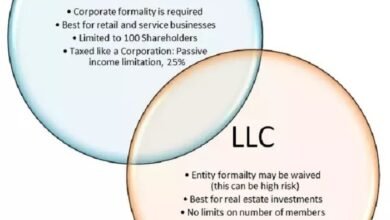
Navigating the world of commercial leases can be complex, especially when it comes to understanding building standards. These standards ensure that a commercial property meets certain criteria for quality, safety, and functionality. Whether you’re a landlord or a tenant, having a clear grasp of these standards can help you make informed decisions and avoid potential disputes.
Table of Contents
ToggleWhat Are Commercial Lease Building Standards?
Commercial lease building standards are guidelines and requirements that a property must meet to be considered fit for business use. These standards cover various aspects, from construction quality and safety to accessibility and maintenance. They are essential for ensuring that a property is safe, functional, and compliant with local regulations.
Key Aspects of Building Standards
- Construction QualityMaterials: The materials used in the construction of the building should be of high quality, adhering to industry standards. This includes the use of durable materials for walls, floors, and roofing, ensuring the building’s longevity and resistance to wear and tear.
Workmanship: The quality of workmanship during construction is critical. It involves following proper building codes and regulations to ensure the structure is safe and well-built. Poor workmanship can lead to issues such as leaks, structural weaknesses, and other problems that can affect the usability of the space.
- Safety and ComplianceFire Safety: Ensuring that the building meets fire safety standards is crucial. This includes having functioning fire alarms, sprinklers, fire extinguishers, and clearly marked exits. Regular fire drills and maintenance of these systems are necessary to ensure they function correctly in case of an emergency.
Structural Integrity: The building should be structurally sound, with regular inspections to identify and address any potential issues. This includes checking for problems with the foundation, walls, and roof, as well as ensuring that the building complies with local structural codes.
- AccessibilityADA Compliance: The property should comply with the Americans with Disabilities Act (ADA), which mandates that buildings be accessible to individuals with disabilities. This includes features such as ramps, elevators, and accessible restrooms.
Accessibility Routes: The design of the property should ensure that all areas are easily accessible, including entrances, common areas, and individual units. This helps in providing a comfortable and usable environment for all occupants.
- Utilities and InfrastructureHVAC Systems: The heating, ventilation, and air conditioning (HVAC) systems must be in good working condition to ensure a comfortable indoor environment. Proper maintenance and regular servicing of these systems are necessary to prevent breakdowns and ensure efficiency.
Electrical and Plumbing: The building should have modern and reliable electrical and plumbing systems. This includes ensuring that the electrical wiring is up to code and that plumbing fixtures are in good working order to prevent leaks and other issues.
- Maintenance and UpkeepRegular Inspections: Routine inspections are essential to maintain the building’s condition. This includes checking for signs of wear and tear, addressing any maintenance issues promptly, and ensuring that all systems and equipment are functioning correctly.
Repairs: Responsibilities for repairs should be clearly outlined in the lease agreement. Typically, landlords are responsible for major repairs, such as structural issues and significant system failures, while tenants may handle minor maintenance tasks.
Negotiating Lease Terms Related to Building Standards
When negotiating a commercial lease, it’s important to address the following aspects related to building standards:
- Fit-Out Requirements: If the property requires modifications or improvements to suit your business needs, these should be detailed in the lease agreement. This ensures that both parties are clear on what changes will be made and who will bear the cost.
- Maintenance Responsibilities: Clearly define who is responsible for ongoing maintenance and repairs. This helps prevent misunderstandings and ensures that the property remains in good condition throughout the lease term.
- Compliance with Regulations: Ensure that the lease includes a clause stating that the property must comply with all relevant building codes, safety regulations, and accessibility requirements. This protects you from inheriting any non-compliance issues.
Conclusion
Understanding commercial lease building standards is essential for a successful leasing experience. By focusing on construction quality, safety, accessibility, utilities, and maintenance, both landlords and tenants can ensure that the property meets their needs and complies with legal requirements. Careful negotiation and clear lease terms are key to preventing future issues and ensuring a smooth and productive tenancy.




